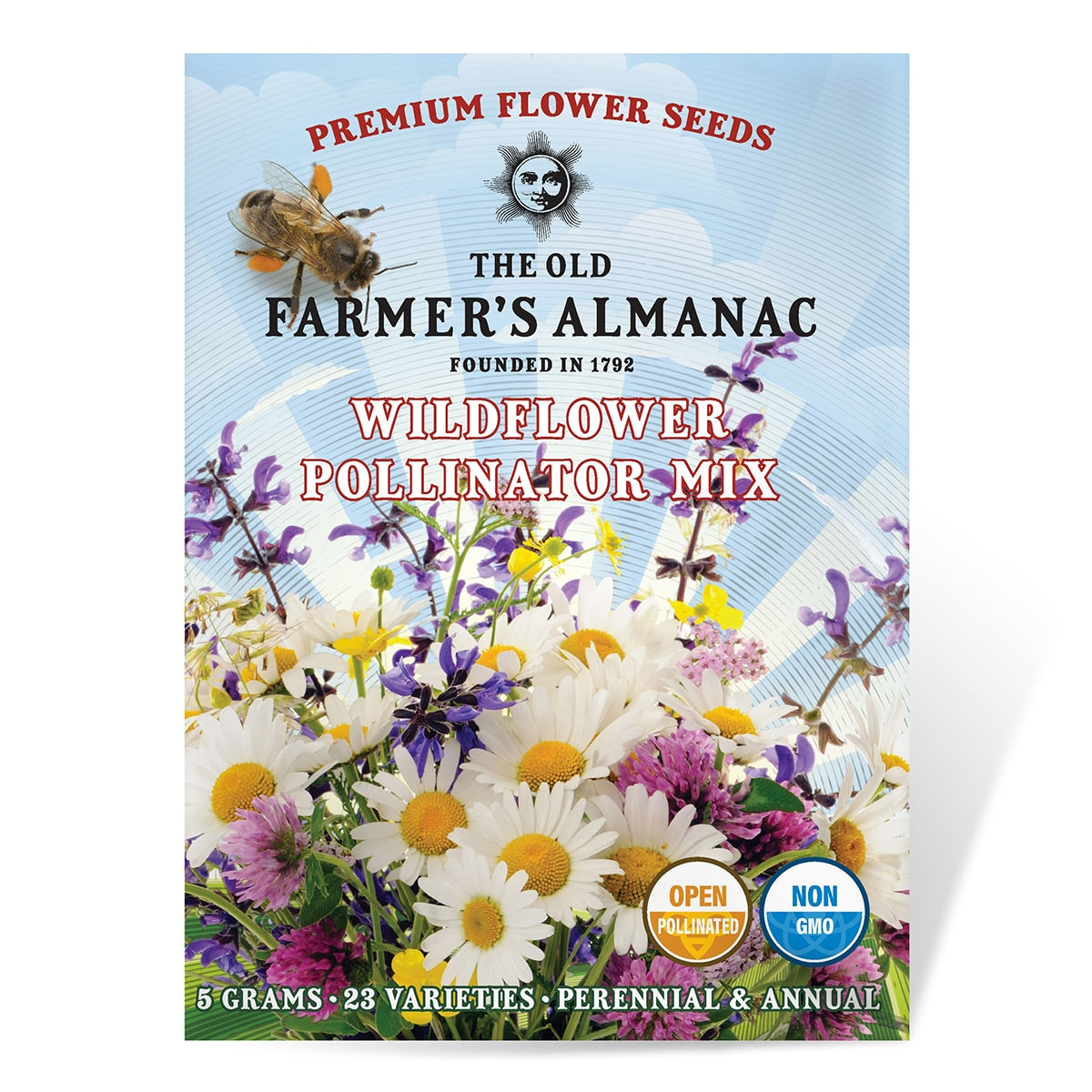Asterales, Brassicales, Caryophyllales, Cornales, Dilleniidae, Lamiales, Magnoliopsida, Oxalidales, Psilotopsida, Ranunculales, Sapindales, Saxifragales, and Solanales
The Old Farmer's Almanac Premium Pollinator Mix Wildflower Seeds - Includes 23 Varieties
The Old Farmer's Almanac Premium Pollinator Mix Wildflower Seeds - Includes 23 Varieties
Auto-renews, skip or cancel anytime.
Auto-renews, skip or cancel anytime.
Couldn't load pickup availability
Collapsible content
DESCRIPTION
23 Wild & Crazy Varieties including nectar-rich Columbine, Nasturtium, Cosmos, Foxglove, Larkspur, Poppy, Snapdragon, and Zinnia.
Keep it Natural: Nature's pollinators love this mix! Don't use pesticides around wildflowers as they can be harmful to bees, butterflies, hummingbirds and other pollinators.
Freshly Packed: These seeds are packed for the current growing season and will provide high germination rates next year as well.
Premium Packaging: All seeds from The Old Farmer’s Almanac are packaged in individually styled packets ideal for gifts, storage or immediate use. Each packet displays the flower, vegetable, plant or herb variety on the front with instructions and plant facts on the back.
GROWING TIPS
Wildflowers are easy to grow from seed and can be sown outdoors in the fall before the ground freezes or in the spring after the last frost. They prefer average soil that is moist; but well drained. To increase visibility during sowing, mix wildflower seeds with a bit of sand. Broadcast the seed blend over your planting area; and gently rake it in before tamping down to ensure good contact with the soil. With varying growing rates, wildflower gardens provide an ever-shifting rainbow of shapes, scents and colors throughout the season.
Save Time in The Spring... Sow Wildflower Seeds in the Fall: Many people plant wildflowers at the beginning of the year with their spring seeds and that works fine; but you can save time during the busy spring gardening season by sowing wildflower seeds in the fall... And your wildflowers will love it!
For thousands of year wildflowers have flourished -- beautifying fields and helping the planet's pollinators -- without our help. Each year as fall turns to winter, and wildflowers die, they drop their seeds to allow new plants to grow the next year. By sowing wildflower seeds in the fall -- after the first frost and before the ground freezes -- you mimic their own natural "self-seeding" process. In southern regions wildflowers will usually germinate and sprout before going dormant for the winter. In northern regions wildflowers will stay dormant throughout the fall and winter before germinating in the spring. Either way, by planting in the fall you'll be sure to have the earliest possible blooms in your wildflower garden the next spring.
Let Wildflowers Be Wild: Because they're self-seeding wildflowers are happy to grow and spread year after year. Consider where best to plant your wildflower garden to give it a chance to flourish and spread naturally for years to come.
Gather Wildflower Seeds: Most wildflowers will drop seeds towards the end of their life cycle each fall. Cut off seed pods, or gather seeds as they begin to fall, and you can spread them in new areas to expand and grow your wildflower garden beyond your original planting area.
Wit & Wisdom: There are more than 6,000 native wildflower species growing all across America. They occur naturally in their climate so they’re are very resilient in all weather conditions. Read The Old Farmer's Almanac Wildflower Growing Guide!












